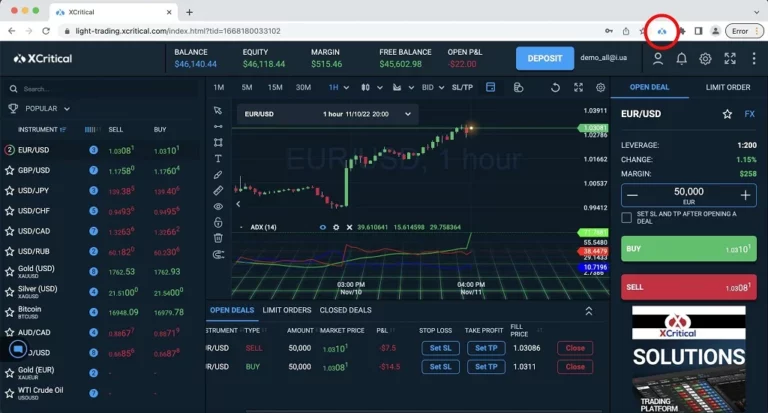Content
It is not intended as a recommendation and https://www.xcritical.com/ does not represent a solicitation or an offer to buy or sell any particular security. Thats why Public doesnt use PFOF and instead uses tipping to help pay for executing market orders so we can bridge the gap between our brokerage and the investors who we serve. Our community members can follow friends and domain experts to see what they are investing in, exchange ideas and improve financial literacy.
Understanding the Mechanics of PFOF
The format and reporting requirements have changed somewhat since. The purpose of allowing PFOF transactions is liquidity, ensuring pfof meaning there are plenty of assets on the market to trade, not to profit by giving clients inferior prices. The EU moved last year to phase out the practice by 2026, and calls for the SEC to do the same have led only to proposals to restrict and provide greater transparency to the process, not ban it altogether.
Which brokers earn revenue through payment for order flow?
Although T-bills are considered safer than many other financial instruments, you could lose all or a part of your investment. Typically, brokerages make their revenue by providing various products and services to their customers, over 75% of which are retail investors. ‘Commission free’ means investors don’t pay a fee to their brokerage every time they buy or sell a stock. However, traders should be aware that the Yield Farming cost of trading is not limited to commission fees.
PFOF Ban: Win-Win for Hedge Funds?
PFOF also could again be the primary driver for why options trading has exploded among retail investors since before the pandemic. Payment for order flow (PFOF) are fees that broker-dealers receive for placing trades with market makers and electronic communication networks, who then execute the trades. The broker receives the order and routes it to a market maker, who offers to sell it at $99.00 but first buys it for $98.90 and keeps the $0.10 difference. It might not seem like a lot, but market makers execute many trades a day, so those cents add up. When a brokerage receives a stock market order, they manage the deal through a clearing firm, which routes orders. The clearing firm is responsible for making sure everything goes smoothly between the brokerage, market maker, and exchange.
Start Trading with Confidence at TIOmarkets
You sell the apple to this party and then walk home, rolling that penny over in your pocket the entire time.
This remuneration may come in the form of a percentage of the spread or a flat charge per share, depending on the agreement between the parties. Brokers are required by law to provide the best possible execution for their clients. However, the practice of PFOF may incentivize brokers to route orders to the highest bidder, rather than the venue that offers the best execution quality. Traders should monitor their trade execution quality and ask their broker about their order routing practices. By paying for order flow, market makers gain access to a steady stream of orders. This allows them to manage their inventory more effectively and to profit from the bid-ask spread.
It covers a broad range of small-cap companies in the United States, providing a comprehensive benchmark for inve… In contrast, the European Union and the United Kingdom have imposed stricter regulations on PFOF. The EU’s Markets in Financial Instruments Directive II (MiFID II) and the UK’s Financial Conduct Authority (FCA) have both banned the practice, citing concerns over conflicts of interest and execution quality.
Othershave proposed banning PFOF altogether, while others have suggested alternative models that would provide customers with more control over their orders. In the United States, the practice is legal but heavily regulated by the Securities and Exchange Commission (SEC). Brokers are required to disclose their PFOF practices to their clients and to ensure that they are providing the best possible execution. And even if it’s paying the broker half a cent per share in exchange for routing its orders, it’s still making a great profit. Of course, in this situation, our apple is stock or options (most likely to be options) and the apple vendors are market makers. According to the SEC, Robinhood sold order flow to the market maker that gave it the best rebate rather than the one that offered the best price for Robinhood’s clients.
- However, traders should be aware that the cost of trading is not limited to commission fees.
- In 2021, the SEC expressed concern about orders flowing to the dark market, where the lack of competition among market makers executing trades could mean that brokerages and their customers are being overcharged.
- Our goal is to help empower you with the knowledge you need to trade in the markets effectively.
- Online brokers with zero-commission trading tend to attract a wide array of investors.
- Critics argue that it creates a conflict of interest between brokers and their clients, as brokers may be incentivized to route orders to the highest bidder rather than the venue that offers the best execution quality.
- This remuneration may come in the form of a percentage of the spread or a flat charge per share, depending on the agreement between the parties.
So while the investor gets the stock of Company A for the price they wanted, its not necessarily the best price execution quality. Thats one reason why Public doesnt use PFOF- to reduce this potential conflict of interest and attempt to get investors better prices. In the Good Model, market makers can get a good deal on a stock and it ends up being a good deal for all involved parties. But with the Bad Model, the market makers dont get investors the best deal but get a somewhat okay deal. Its because of this later model that investors are taking a harder look at PFOF rather than taking it at face value and questioning whether it presents a price improvement or is a conflict of interest. If you wanted to trade stocks before 2013, you would have had to pay commissions to a brokerage firm.
The newbies are aggressive and offer you the best fill, better than the old players. In fact, two of these best markets presented to you by the newcomers offer you the same price. Now if you are selling an apple for a client, wouldn’t it be better if there was more competition? We want them to fight for the right to purchase our apple, thus making the spread tighter. Even if the SEC implements new rules, there would first be a period of public debate and comment before anything is implemented.

This could potentially lead to price manipulation and unfair trading practices. Routing orders to market makers instead of an exchange may also increase liquidity for customers. Since market makers are always standing by, willing to buy or sell, that means customers don’t need to worry about finding a buyer or seller for the order they want to place. Market makers thus provide brokers with significantly more in PFOF for routing options trades to them, both overall and on a per-share basis. Based on data from SEC Rule 606 reports, researchers in the 2022 study mentioned above calculated that the typical PFOF paid to a broker for routing options is far more than for stocks. Let’s say a market maker purchased 100 shares of Apple (AAPL) stock from a retail seller for $152.01 per share, and then turned around and sold the stock to a retail buyer at a price of $152.04 per share.

This has made trading more affordable for the general public, leading to an increase in retail trading activity. The practice of PFOF has always been controversial for reasons touched upon above. Traders discovered that some of their «free» trades were costing them more because they weren’t getting the best prices for their orders. Market makers make money by selling a stock for a slightly higher price than they bought it for. Market makers compete for orders from broker-dealers and institutional traders like mutual fund companies.
However, these benefits would disappear any time the PFOF costs customers more through inferior execution than they saved in commissions. An important part of the NMS was creating the NBBO, which requires all trading venues to display their best available bid and offer prices, and for trades to be executed at these prices or better. This was meant to promote competition among trading venues, which should lead to better prices for investors.
